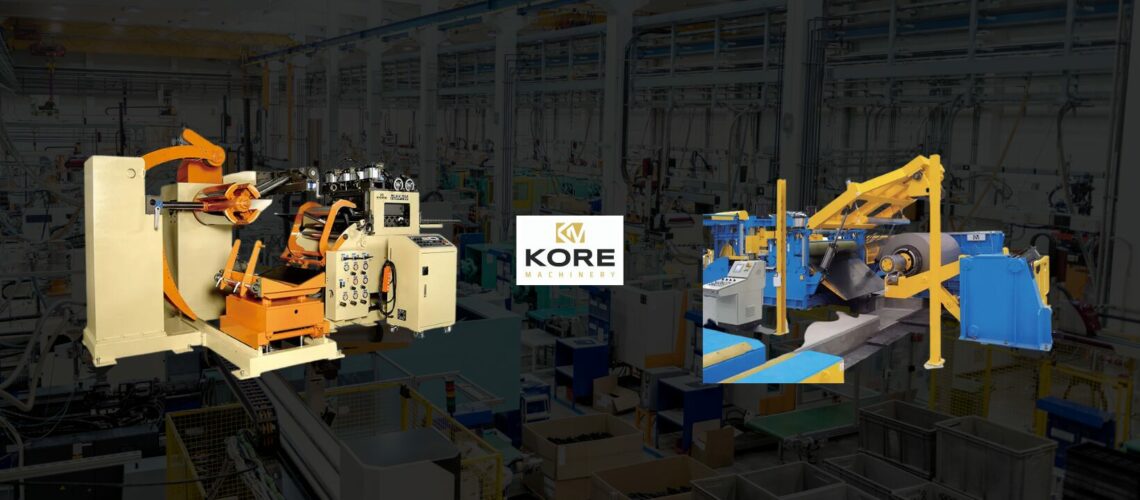What Sets Them Apart?
Precision and efficiency are paramount in metal processing. Two essential types of machinery—cut—to—length (CTL) lines and slitting lines—play pivotal roles in transforming large metal coils into usable formats for further processing or direct application. While both systems are designed to handle coiled materials, they serve distinct purposes and cater to different production needs.
In this guide, we’ll explore the key differences between CTL and slitting lines, helping you understand how each function and how to choose the right solution for your manufacturing processes.
What Are Cut-To-Length Lines?
Cut-to-Length (CTL) lines are designed to convert metal coils into flat, precisely cut sheets. The process begins with uncoiling the metal, followed by leveling to remove any coil set or curvature. The material is then cut to a specific length before being stacked for easy handling.
These lines are crucial for industries requiring high-precision sheets, such as the automotive, aerospace, construction, and appliance sectors. CTL lines can handle various materials, from stainless steel to aluminum, and can process thick, heavy-gauge materials.
What Are Slitting Lines?
Slitting lines, on the other hand, are used to cut wide metal coils into narrower strips or mults. The process involves passing the coil through a slitter head equipped with rotary knives that slice the metal into precise widths. These narrower strips are then recoiled for transportation or further processing.
Slitting lines are vital for producing materials used in downstream operations like metal stamping, tube production, and roll forming. Industries such as electronics, automotive, and construction heavily rely on slit coils for manufacturing components like transformer cores, shielding materials, and structural beams.

Differences in Functionality and Output
The main distinction between Cut-To-Length (CTL) lines and slitting lines is their functionality and the type of output they produce. CTL lines are designed to convert metal coils into flat sheets of specific lengths, making them perfect for applications that require large, flat metal pieces. On the other hand, slitting lines are used to divide wide coils into narrower strips, ideal for products that require precision-cut strips.
Key differences include:
- Cut-To-Length (CTL) Lines: Produce flat metal sheets cut to specific lengths.
- Slitting Lines: Split wide coils into narrow strips for further processing.
- Applications: CTL lines are used for large metal pieces, while slitting lines are suited for narrower, precision-cut coils.
Material Handling and Processing Capabilities
Cut-to-Length lines are typically used for heavy-gauge materials, offering the ability to produce high-precision sheets with smooth, flat surfaces. These lines are ideal for producing large sheets from materials like hot-rolled steel, cold-rolled steel, and aluminum, making them a go-to choice for industries requiring heavy-duty sheets.
Slitting lines, however, specialize in cutting wide coils into narrow strips. They can process various material thicknesses, from thin, lightweight aluminum to thicker, harder metals. The ability to adjust knife settings allows slitting lines to handle a variety of materials while maintaining high cutting precision.
Precision and Tolerances
Regarding precision, CTL lines focus on cutting sheets to an exact length, ensuring that each piece meets strict tolerance standards. This is critical in industries where precise sheet dimensions are essential for manufacturing large components like body panels or cladding.
Slitting lines, on the other hand, prioritize edge quality and strip width. The precise arrangement of rotary knives allows for clean, burr-free edges, crucial for materials used in further processing or as part of an assembly line.
Automation and Customization
CTL lines and slitting lines benefit from automation, but each in different ways. CTL lines often incorporate automated stacking, leveling, and cutting mechanisms to improve throughput and reduce manual labor. Similarly, slitting lines use automated knife adjustment systems, tension controls, and recoiling mechanisms to guarantee precision and efficiency.
At KORE Machinery, our machines are designed to integrate cutting-edge automation, allowing for on-the-fly adjustments, hands-free operations, and optimized tension control. We customize our systems to meet each customer’s specific needs, safeguarding high productivity and precision.
Common Applications and Industries
Cut-to-length lines are used in industries requiring large, flat metal sheets. Applications include:
- Automotive: Manufacturing body panels and chassis components.
- Aerospace: Producing structural components for aircraft.
- Construction: Creating cladding, roofing, and other building materials.
Slitting lines are commonly employed in industries that rely on narrower strips for further processing. Applications include:
- Metal Stampers: Using slit coils for stamping various parts.
- Tube Producers: Converting slit strips into metal tubes.
- Electronics: Manufacturing transformer cores and metal shields.
When To Use
When deciding between a CTL line or a slitting line, it’s essential to consider your production requirements. A CTL line is the best choice if your end product requires flat, precision-cut sheets. If your manufacturing process depends on narrow strips, a slitting line will provide the flexibility and precision you need.
Factors such as material type, coil thickness, and desired output should all be considered when selecting the right system for your facility. At KORE Machinery, we work closely with our clients to ensure they have the best solution tailored to their needs.
KORE Machinery’s Expertise in Coil Processing
At KORE Machinery, we pride ourselves on offering the industry’s most advanced, reliable, and efficient coil processing solutions and coil processing equipment. Whether you need a cut-to-length line for precision sheet production or a slitting line for producing narrow coils, we have the expertise to deliver customized solutions that enhance your production process.
Contact us to learn more about how we can help optimize your coil processing operations and provide you with the highest-quality machinery, fitted to your specific needs.



